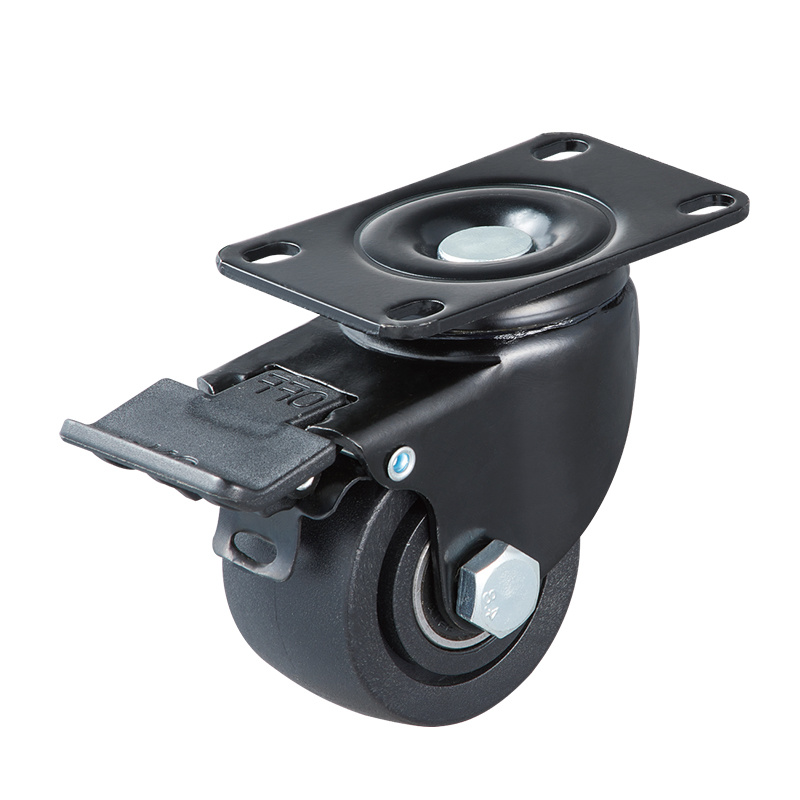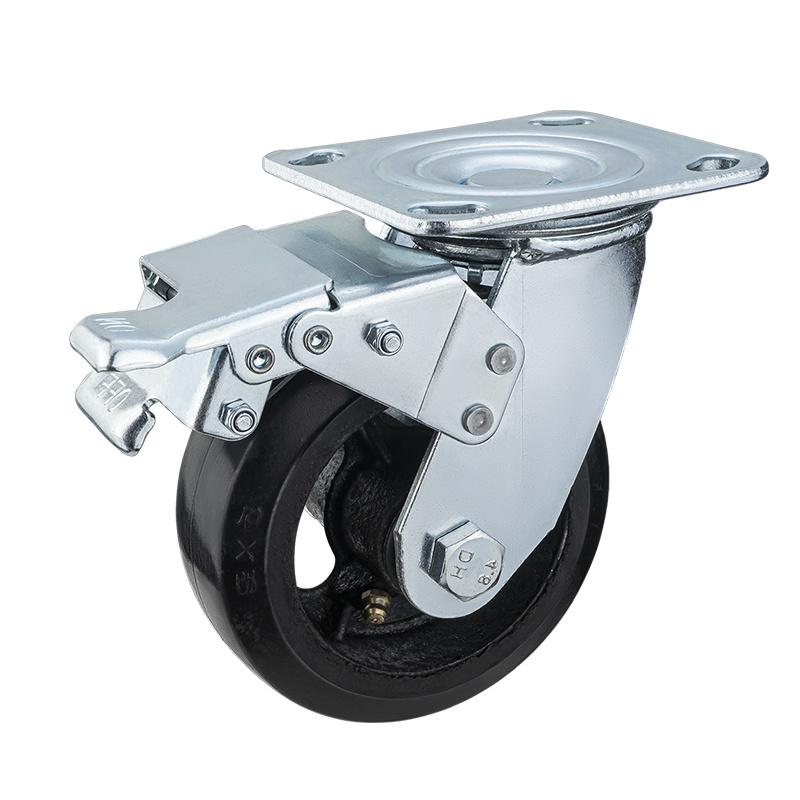BLOG
Essential Safety Tips for Using Heavy Duty Casters: Maximize Efficiency and Minimize Risks
2025-08-02
Safety Tips When Using Heavy Duty Casters
Introduction to Heavy Duty Casters
Heavy-duty casters play a vital role in various industrial and commercial applications, enabling smooth movement of heavy loads. Whether you’re utilizing them in warehouses, factories, or workshops, understanding how to use them safely is paramount. In this article, we will delve into essential safety tips that will h
Safety Tips When Using Heavy Duty Casters
Introduction to Heavy Duty Casters
Heavy-duty casters play a vital role in various industrial and commercial applications, enabling smooth movement of heavy loads. Whether you’re utilizing them in warehouses, factories, or workshops, understanding how to use them safely is paramount. In this article, we will delve into essential safety tips that will help you maximize efficiency while minimizing risks.
Understanding the Importance of Safety
Before we dive into specific safety tips, it is crucial to understand why safety matters when using heavy-duty casters. Heavy loads can pose significant hazards, including injuries to personnel and damage to property. By adhering to safety protocols, you can create a safer work environment and enhance operational efficiency.
1. Selecting the Right Caster for Your Needs
Choosing the right caster is the first step toward ensuring safety. Here are some key factors to consider:
a. Load Capacity
Always select a caster with a load capacity that exceeds the total weight of the items being transported. For heavy-duty applications, this may mean opting for casters rated for significantly more than the anticipated weight.
b. Wheel Material
Choose the appropriate wheel material based on the floor surface and the nature of the load. For instance, polyurethane wheels are ideal for smooth surfaces, while rubber wheels are better suited for uneven surfaces. This consideration can significantly affect maneuverability and safety.
c. Brake Mechanism
Ensure that the casters are equipped with a reliable brake mechanism. This feature is essential for keeping heavy loads stationary when needed, reducing the risk of accidents.
2. Regular Maintenance and Inspection
Routine maintenance is crucial for ensuring the longevity and safety of heavy-duty casters. Here are some maintenance practices to implement:
a. Visual Inspections
Conduct regular visual inspections to identify any signs of wear or damage, such as cracks in the wheels or loose bolts. Addressing these issues promptly can help prevent accidents.
b. Lubrication
Keep the casters properly lubricated to reduce friction and wear. This step not only enhances performance but also contributes to safety by minimizing the risk of malfunction.
c. Tightening Loose Components
Periodically check and tighten any loose screws, bolts, or other components. Loose fittings can compromise safety and lead to caster failure.
3. Proper Loading Techniques
Using proper loading techniques is essential for safety. Here are some guidelines to follow:
a. Distributing Weight Evenly
Ensure that the load is evenly distributed across the casters. Uneven weight distribution can lead to instability, increasing the risk of tipping or falling.
b. Securing the Load
Always secure the load with straps or other restraints to prevent shifting during movement. A stable load is less likely to cause accidents.
c. Avoiding Overloading
Never exceed the load capacity of the casters. Overloading can lead to caster failure, resulting in injuries and damage.
4. Safe Handling Practices
Employing safe handling practices is vital when using heavy-duty casters. Consider the following:
a. Clear Pathways
Before moving heavy loads, ensure that the pathway is clear of obstacles. This precaution minimizes the risk of tripping or collision.
b. Teamwork
When handling particularly heavy or awkward loads, use teamwork. Collaborating with others can help distribute the effort and reduce the risk of injury.
c. Proper Lifting Techniques
Educate all personnel on proper lifting techniques to prevent strain and injury. Lifting with the legs, keeping the back straight, and avoiding twisting motions are key practices.
5. Training Staff on Safety Protocols
Training is an essential component of safety. Implement a training program that covers the following areas:
a. Caster Operation
Ensure that all staff members understand how to operate casters safely, including how to engage and disengage brakes.
b. Emergency Procedures
Educate employees on emergency procedures in case of accidents or malfunctions. Knowing what to do can save lives and reduce injuries.
c. Ongoing Education
Provide ongoing education on safety practices and updates in caster technology. Keeping staff informed promotes a culture of safety.
6. Understanding the Environment
The environment in which casters are used can significantly impact safety. Consider these factors:
a. Floor Conditions
Ensure that the flooring is suitable for heavy-duty casters. Uneven, slippery, or damaged floors can lead to accidents.
b. Temperature and Humidity
Be aware that extreme temperatures and humidity can affect the performance of caster materials. Choose casters designed for your specific environmental conditions.
c. Traffic Flow
Assess traffic patterns in your workspace. High-traffic areas may require additional safety measures, such as signage or barriers.
7. Using Technology to Enhance Safety
Leverage technology to improve safety and efficiency:
a. Caster Sensors
Consider implementing sensors that can monitor caster performance and alert staff to potential issues before they become critical.
b. Load Monitoring Systems
Utilize load monitoring systems that can prevent overloading and enhance safety.
c. Automation
Explore automated systems for transporting heavy loads, which can reduce the need for manual handling and the associated risks.
8. Conclusion
In conclusion, ensuring safety when using heavy-duty casters is crucial for maintaining a productive and accident-free work environment. By selecting the right casters, conducting regular maintenance, employing proper loading techniques, and training staff on safety protocols, you can significantly reduce risks. Additionally, understanding your environment and leveraging technology can further enhance safety measures. Prioritizing safety not only protects personnel but also contributes to operational efficiency and success.
FAQs
1. What is the maximum load capacity for heavy-duty casters?
The maximum load capacity varies among different models but typically ranges from 1,000 to 20,000 pounds. Always check the manufacturer's specifications.
2. How often should I inspect heavy-duty casters?
Regular inspections should be conducted at least once a month, or more frequently if the casters are used in high-demand environments.
3. Can heavy-duty casters be used outdoors?
Yes, but ensure that the casters are made from weather-resistant materials suitable for outdoor use.
4. What maintenance do heavy-duty casters require?
Maintenance includes regular cleaning, lubrication, visual inspections for damage, and tightening loose components.
5. Are there special considerations for using casters on ramps?
Yes, when using casters on ramps, ensure that the load is secure, and consider using casters with brakes to prevent uncontrolled movement.
Key words:
RELATED NEWS
Safety First: The Importance of Using Diamond Casters in Workspaces
2025-09-13
Safety First: The Importance of Using Diamond Casters in Workspaces
Table of Contents
Introduction to Diamond Casters
What Are Diamond Casters?
Benefits of Using Diamond Casters in Workspaces
Enhanced Safety Features
Improved Mobility and Flexibility
Durability and Reliability
Applications of Diamond Casters in Various Industri
Understanding Market Trolley Casters: A Guide for Professionals
2025-09-06
When it comes to enhancing mobility in various applications, market trolley casters play a pivotal role. These casters are designed to facilitate the smooth movement of trolleys, carts, and other equipment in retail, logistics, and industrial settings. Understanding the fundamentals of market trolley casters is essential for professionals in the hardware tools and components industry, particularly
How Industrial Trolley Casters Can Improve Productivity in Manufacturing
2025-08-30
How Industrial Trolley Casters Can Improve Productivity in Manufacturing
Table of Contents
What are Industrial Trolley Casters?
Importance of Casters in Manufacturing
Types of Industrial Trolley Casters
Benefits of Using Industrial Casters
How Casters Improve Workflow
Choosing the Right Caster for Your Needs
Maintenance Tips for Casters
Future Trends in Industrial








